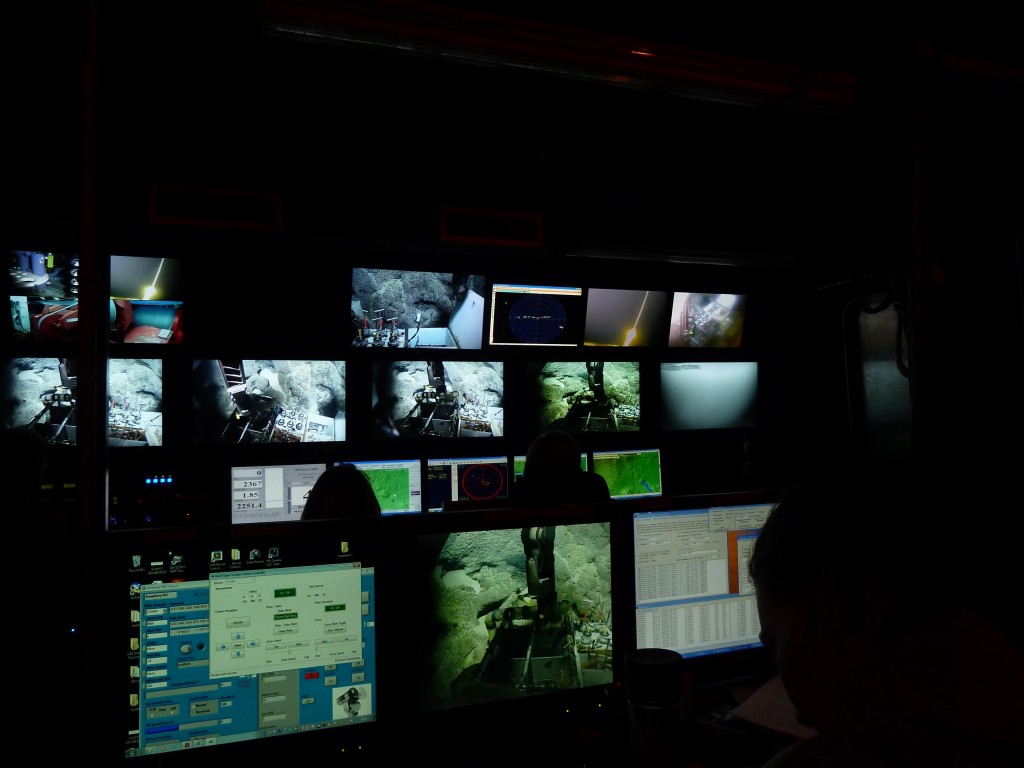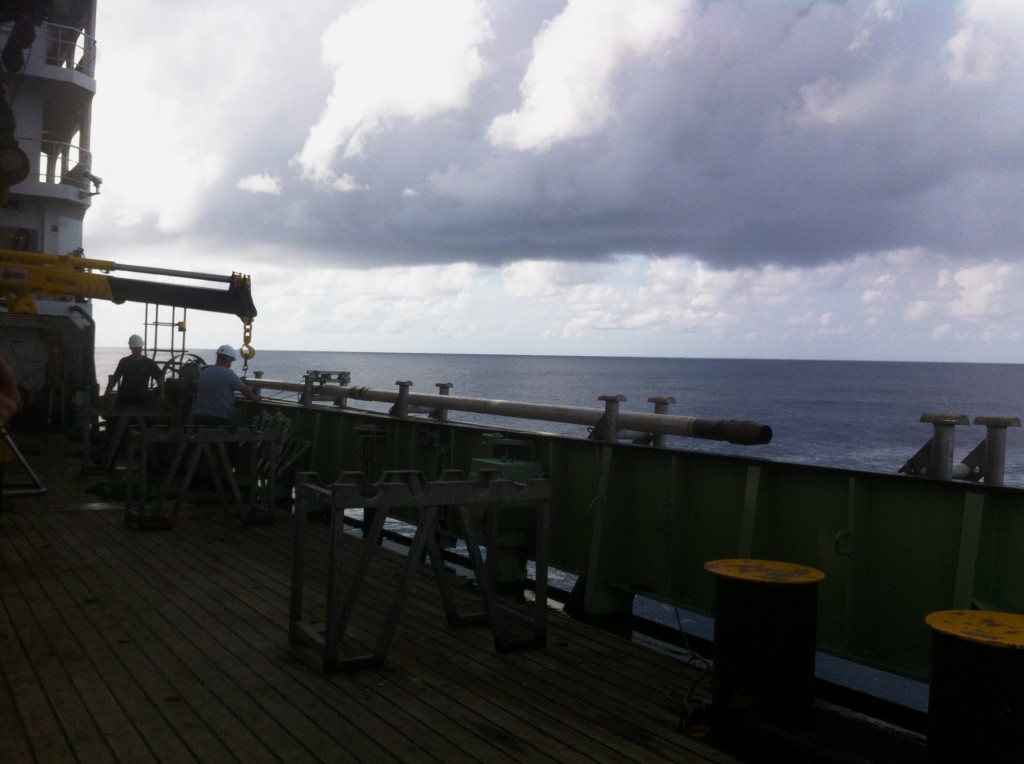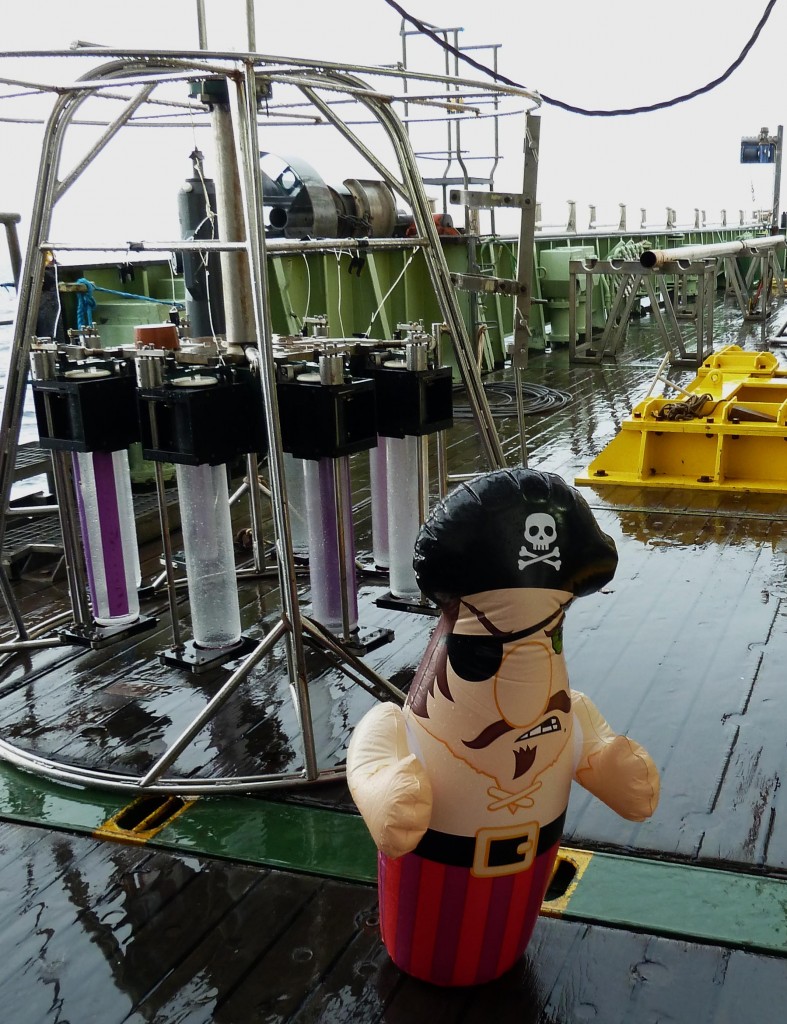Besides ROVing many more things happened since we left Tenerife on the 13th. During the 5 days transit we set up things and everyone was trained in all different kinds of gear and procedures in order to carry out multiple tasks on board. So team science was split into two 12 hour shifts covering the day’s cycle. On the 18th we arrived at our first sampling location. We spent much time and effort to shed some light on the secrets the dark deep-sea of the Atlantic Ocean holds at Carter seamount.
We started our scientific program off with a full deep-sea CTD (conductivity, temperature, depth) profile close to the seamount. Water sampling bottles attached to the CTD rosette were fired (i.e., the lids were closed) at different depths throughout the water column allowing us to measure additional parameters for the respective depths, e.g. radiocarbon, nutrients and trace metals.
Once we arrived at the actual seamount, priority was given to ROV (remotely operated vehicle) dives in order to collect specific deep-sea fauna. The technicians in the control room are accompanied by at least three scientists at any time during a dive in order to identify samples to be collected and keep all logs up-to-date. Agreeing with chief scientist Robinson I can say that our dives have been spectacularly successful recovering loads of sample material from the seafloor! So we’ve been working hard on identifying, processing and storing all the precious live and fossil samples. Just this evening the ROV was back on deck after a ~12 hours dive, thus finishing the remaining bit of our Carter seamount transect from about 3 km water depth up to the top of the seamount at ~200 m water depth. That transect has been interrupted by rather bad weather conditions (see Peter’s photo of the day: 23.10.13). Since for ROV deployment and recovery good weather is being preferred we chose to do intermittent sediment coring which is less sensitive to bad weather conditions.
During our ROV dives it turned out that the slopes of Carter seamount are very steep so that promising core locations are rare. Hence we steamed back to a deep-sea location at 4.6 km water depth which we identified as a promising site during our hydro-acoustic surveys. After the mega-corer came back on deck with three out of eight potential cores being filled with sediment (not bad for the beginning!) we watched the long piston core diving down. It took a few hours of waiting before the barrel was finally back on deck so that we recovered the core liner and cut it in sections. At a first glance the core showed some spectacular changes of sediment properties. However, a color scan will be done tonight. This scan will give us a better estimate of sediment color variability through time and hence, will allow drawing some conclusions about the time interval covered by the ~7.50 m of sediment.
Caption photo 3: Captain angry: Arrr! Mega-core empty again!
While I’m writing this entry we finished another mega-coring attempt. Unfortunately, the mega-corer came back on deck without any sediment and furthermore, the hard bedrock also damaged some of the tubes – but we have enough spares on board! I’m heading to bed now while the night shift will be busy processing the samples collected during the last ROV dive.
Fingers crossed that we can announce more coring success soon!
Written By: Torben Struve






Leave a Reply